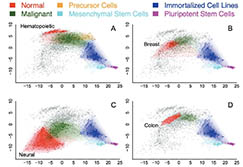Past questions
Alas life is short and there are so many interesting and useful ideas to explore. These questions continue to excite us. The only reason they are found on a "Past Questions" page is no one in our lab is currently working on them. We may well return to them, especially if a new lab member wants to take them on.
How to automate expert-level growth disorder detection?
Accurate and early detection of pediatric growth disorders is possibly the most cost-effective screening procedure in pediatrics. But it's done poorly and incompletely. We developed methods to generate a differential diagnosis from growth data back in the expert-system era of AI.
Can you wean an infant from a ventilator automatically?
Watch neonatologists discuss endlessly how many mmHg to decrease the peak end expiratory pressure or the partial pressure of oxygen on the ventilator during rounds in the NICU. Or consider how this can be done smoothly, aggressively and effectively using a simple fuzzy controller (implemented in Lisp) as we trialed almost 3 decades ago.
In team biomedical science does proximity foster productive collaboration?
There is an amusing backstory as to why we did this off-topic study and it really did get a lot of comments and I still get occasional calls to consult on layout of large research institutes.
In the genomic era, how can we learn about cancer behavior from embryonic development
Rudolf Virchow in 1858 first suggested that neoplasms arise "in accordance with the same law, which regulates embryonic development" and this insight has informed cancer grading and cancer biology ever since. We brought this concept to the 21st century by studying cancer functional genomics vs the developmental trajectory of gene expression in their cognate organs. This provides both prognostic insights as well as classifies the landscape of cancers into proliferative, inflammatory and hypoxemic subtypes.
In cellular function does proximity of genes in the genome inform foster joint function?
In the pre-HiC era we looked at how gene expression correlated with the linear distance in the genome in multiple organisms in disease and development and in relation to other regulatory architectures.
How can we use the information locked in electronic health records to advance discovery research?
The i2b2 system was born out of an NIH National Center for Biomedical Computing and has since been adopted by hundreds of healthcare systems internationally and generated hundreds of research projects, spun off companies (independently of us because all our code is open source)
Can we build virtual health records across health systems?
Two years after the web was born we we used this then new and powerful infrastructure to show how electronic health records from different vendors and implemented at very disparate institutions could merged in real-time to provide clincians with a longitudinal record. Functionality then was used by others at scale.
What would it take to give patients control of their own health record?
What if health automation was engineered to first serve as an agent, a guardian angel for the patient and only second for healthcare professionals? What if they could control their own record and determine who could see and share their private health information?
